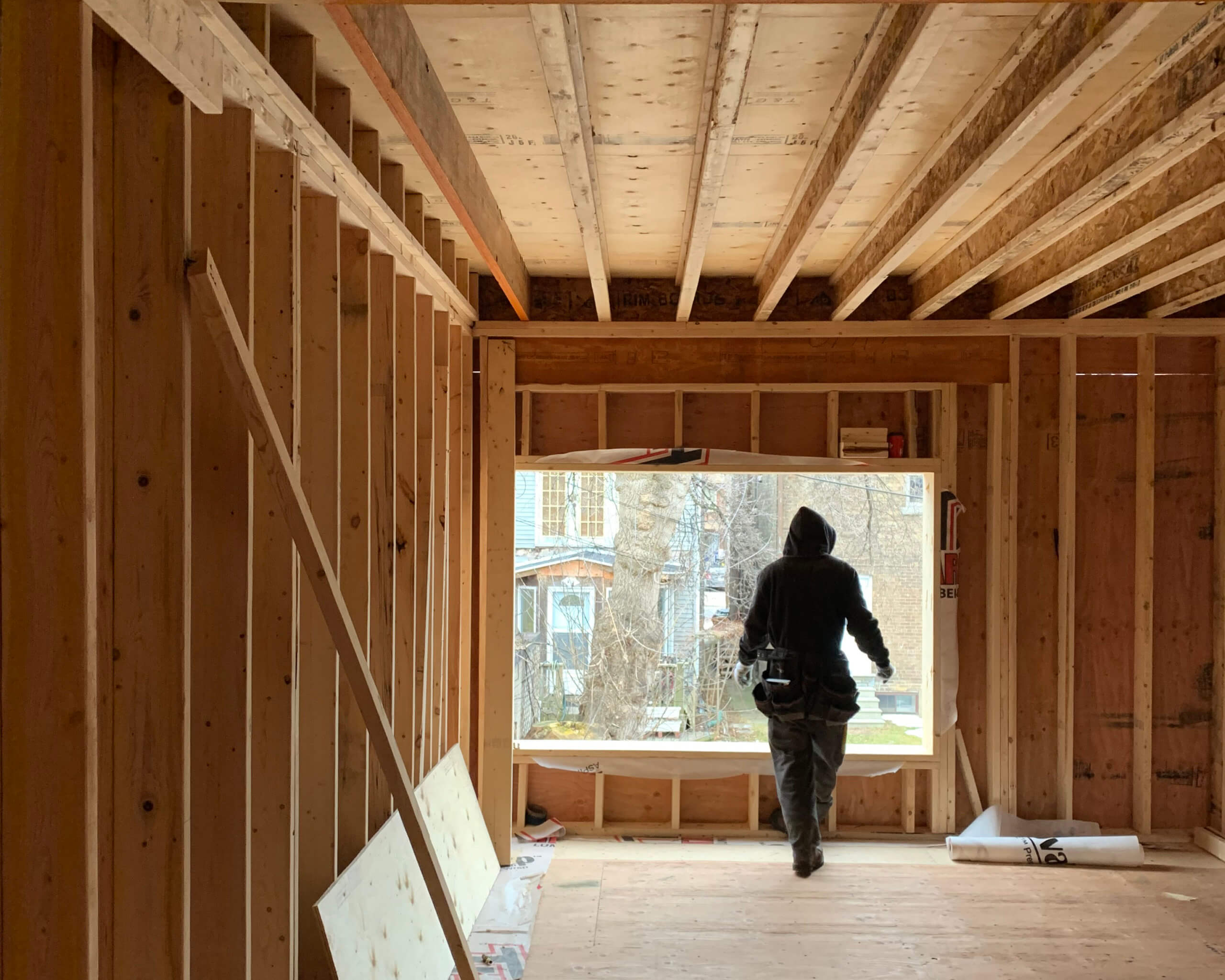Timelines and budgeting are some of the most common questions we receive about laneway home development. Over the last 8 to 12 months, these questions have steadily become more focused on the premiums or delays associated with building during the pandemic. By now, we have all seen news articles and social media references to the ballooning prices of goods and depleted supply chains across many industries. While laneway suite construction has not been immune to these trends, it is important to understand the specific ways in which the pandemic has truly affected this new typology.
Here, we will highlight how the pandemic has affected two of the most important (and intertwined) factors in planning your project: timelines and costing.
TIMELINES
Design & Approvals
Building a laneway suite is no small endeavour. You are building a brand-new home in the tight confines of an established neighbourhood, subject to rigid conformance criteria set forth by zoning by-laws, building code, and other authorities having jurisdiction. As we all began to navigate the challenges of working remotely at the onset of the pandemic, municipal staff were doing the same. At that time, permit approvals and response times became incredibly lengthy, universally impacting the permitting process for projects across the city. In response, our team perfected and refined an approvals process that minimizes the impact of municipal delays on the grander project timeline. We are also happy to report that many municipal departments are now embracing digital platforms to get reviews and response times back on track. Currently, design and approvals for a typical laneway suite project remain between 4-5 months, as was the same pre-pandemic.
Construction
Executing these builds has, like with many other typologies, brought new challenges during the pandemic. Lengthy supplier lead times, limited trade availability, and precautions to limit exposure on job sites have forced contractors to alter their typical workflows to minimiz delays. Key building materials like lumber, windows, claddings, and appliances have seen massive increases in lead times due to a variety of factors. In small job sites like those on a laneway, it has also become critical to limit the number of trades on site at any given time. Whereas before the pandemic a contractor would need to plan 2-3 weeks in advance, savvy builders are now are planning 2-3 months in advance. Ordering items early, considering equivalent alternatives for back-ordered materials, and keeping an open dialogue with trades, consultants, and the homeowner have all become even more critical to a successful (and timely) project delivery. This all considered, our projects have seen a slight increase in construction length from 5-8 months pre-pandemic to 6-10 months in the current market.
 COSTING
COSTING
Design & Approvals (Soft Costs)
Soft costs refer to prices associated with design, approvals and other items required beyond construction. This typically includes fees for designers, architects, engineers, permit applications, surveyors, and municipal levies. Some projects may also require other soft costs including arborists, legal representation, or other consultants. Soft costs have remained relatively unaffected in today’s climate. Municipal fees remain the same and consulting costs (design, engineering etc.) are generally aligned with pre-pandemic rates. Surveyors remain in high-demand and our team has experienced slight increases in fees for these to be prepared, however a survey is typically a very minor expense in the grand scheme of a development budget.
Construction (Hard Costs)
Hard costs are those associated with all material and labour required to execute the construction. In the last 12 months we have endured waves of material shortages and price increases in many different aspects of a typical construction project. Manufactured lumber products, for example, increased by up to 200% at one point and certain items were virtually impossible to source. We have also seen incremental increases in claddings, electrical supply, insulation, steel, and window products, which aggregate to appreciable increases in building cost. We do see this slowly normalizing with materials more readily available, costs plateauing, and some indications of future cost decreases.
Our team collects costing data on all our projects – both competitively quoted from multiple contractors and the completed value. Reviewing our costing data prior to the pandemic, a hard-cost budget for a completed laneway suite would average $300-320 per square foot, depending on a wide variety of factors including size, configuration, finish quality, and complexity. In today’s market, this number has increased to $340-360 per square foot, representing an approximate 10-15% premium.
CONCLUSIONS
We are commonly asked if it makes sense to wait out the pandemic to begin construction in hopes of prices normalizing. While we do not have a crystal ball, logic would lead one to believe it will take quite some time for any resumption of pre-pandemic costing (if at all). Our recommendation is to instead focus on the big picture – consider the return on investment that is unique to laneway suites and ensure that your development budget works favourably both in today’s market and in future. Constructing on already owned land, as-of-right, with favourable lending rates, and leveraging financial incentives available still makes laneway suites to be one of the most profitable investments in real estate despite the challenges that affect all new construction projects at the moment.
In these unique times, homeowners continue to invest in their properties introducing laneway suites to generate additional revenue, house loved ones, and to create additional living space. The secret to any successful project is to assemble a competent team that can help realize your physical and financial vision through an educated approach. This holds true in any market, but particularly in the one we experience today. We continue to be your resource for all things laneway suites. If you have any further questions or if you would like to see if your lot qualifies, send us an email at info@lanescape.ca . We would be pleased to help chart your path forward to financial and housing flexibility.
